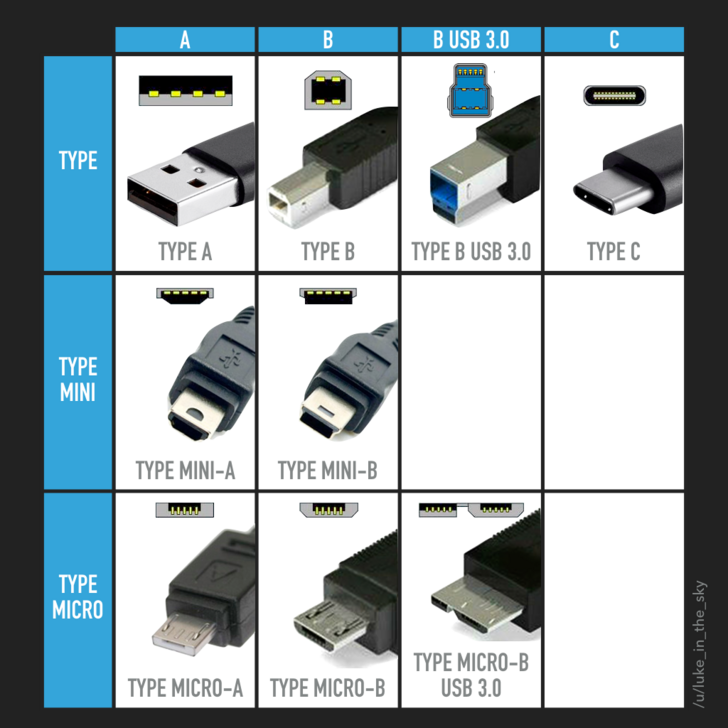Types of data cable connectors/USB types chart
There are many types of data interfaces. From the early USB 1.0 to the current USB 3.0 protocol, it has undergone a long historical evolution and witnessed the progress of science and technology. The following is a detailed introduction to the types of data line interface types.
Type of data interface
1>USB Type A, the type connector is located on the main controller of the computer and the hub, and is a flat rectangular interface.
2>USB Type B, Type B connectors are designed for use with USB peripherals. Type B connectors are square in shape and have slightly angled corners at the top of the connector.
3>USB Type-C, USB-C or USB Type-C connectors are the latest USB connectors on the market.
4>Micro-USB Type B, smaller than USB Mini-b, while still supporting 480 Mbps high-speed transfer rate and On-The-Go function.
5>USB Mini-b (5 pins), Mini-b cable assumes 5 pins. This connector is very small, about two-thirds the width of an A-type connector.
6>USB Mini-b (4 pins), this structure is mostly used on digital cameras. USB 3.0 Type A, usually located on the host controller of computers and hubs, the Type A connector is a flat, rectangular interface.
7>USB 3.0 Type B, USB 3.0 Type B connector can be found on USB 3.0 devices. This connector is designed to transfer data and power in USB SuperSpeed applications.
8>USB 3.0 Micro B, the USB 3.0 Micro B connector is on the USB 3.0 device. This connector is designed to transfer data and power in USB SuperSpeed applications.
9>Micro-USB B, designed for USB On-The-Go devices, accepts Micro-USB A or Micro-USB B cable connection.
10>Micro-USB A, USB A offers a smaller physical size than USB Mini-b, while still supporting 480 Mbps high-speed transfer rate and On-The-Go function.
11>USB Mini-b (Fuji), this is another unofficial connector that is also widely used in digital cameras, especially some models made by Fuji®. It's more like an A-type connector, with a flat, rectangular shape.
In addition to the above, some companies will develop unique interfaces for their products, such as Apple's lighting interface.
Development process
The first USB 1.0 appeared, the speed was only 1.5Mb/s (bits per second), and then it was upgraded to USB 1.1, and the speed was greatly increased to 12Mb/s.
On the basis of USB 1.1, USB 2.0 was developed, and its transfer rate reached 480Mbps, which is 60MB/s converted to MB, which is enough to meet the rate requirements of most peripherals. It can be said that USB 2.0 has improved the transmission speed a lot compared to the previous generation.
After USB 2.0, the USB 3.0 Promoter Group, which consists of Intel, Microsoft, Texas Instruments, etc., announced that the USB 3.0 standard has been formulated, and the theoretical transmission speed will reach 5.0G/S. Compared with USB 2.0, the transmission speed of USB 3.0 has been improved. qualitative leap.
Send your message to us:
Post time: May-04-2022
